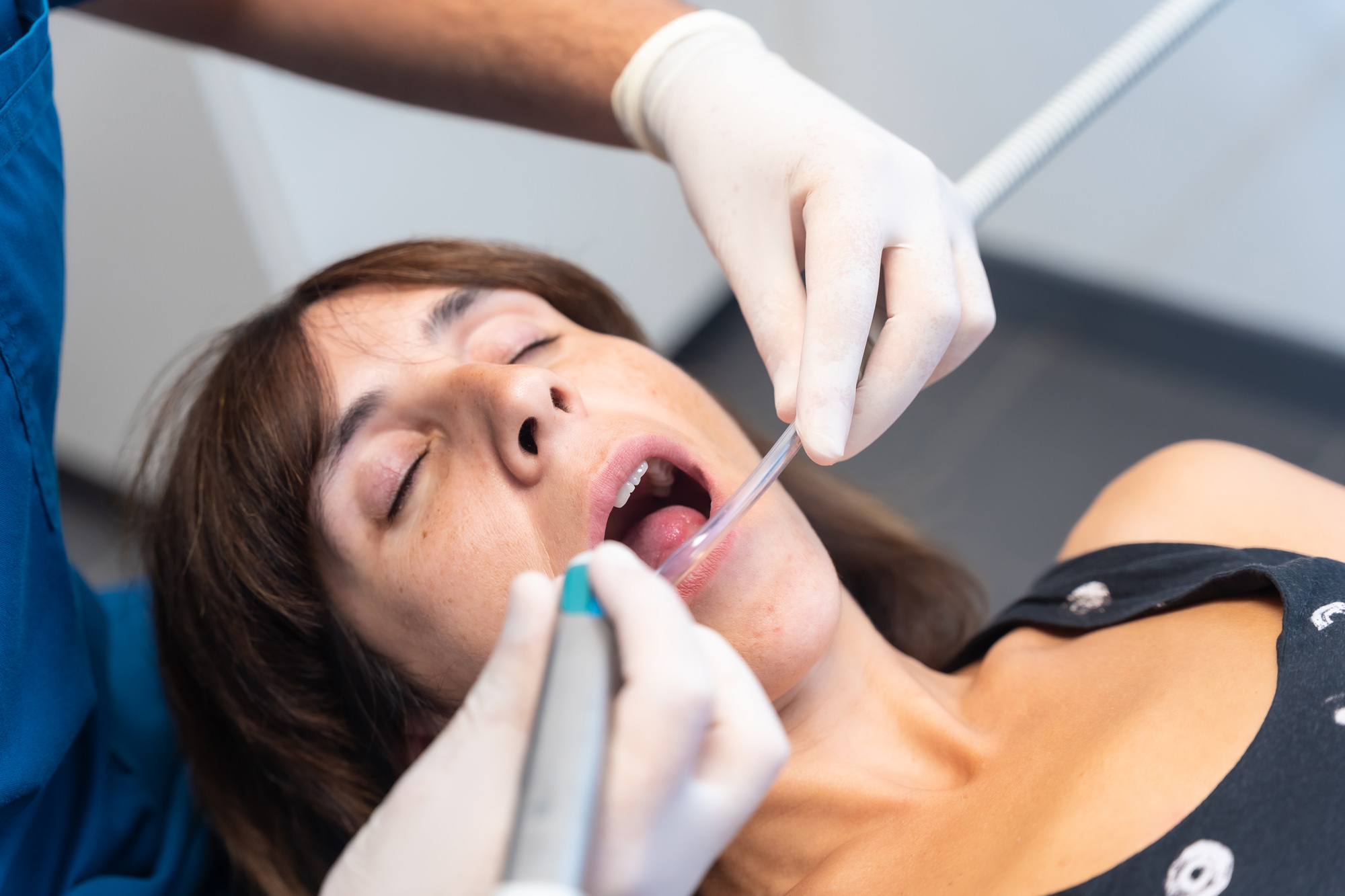Peri-Implantitis – The Leading Culprit
Peri-implantitis is a pathological condition occurring in the tissues around dental implants, characterized by inflammation and loss of supporting bone. It is similar to periodontitis (gum disease) but occurs around implants rather than natural teeth.
Symptoms of peri-implantitis include:
- Redness or bleeding of the gums around the implant
- Swelling or suppuration (pus) in the peri-implant mucosa
- Increased probing depths around the implant when examined
- Progressive loss of supporting bone on radiographs
- Prolonged discomfort or pain around the implant site
- Possibly, implant mobility in advanced cases
Causes of Peri-Implantitis
The causes of peri-implantitis can be multi-faceted and often involve a combination of factors:
- Bacterial Infections: Similar to natural teeth, dental implants can accumulate biofilms that harbor bacteria, leading to infection and inflammation.
- Poor Oral Hygiene: Inadequate cleaning can lead to plaque accumulation, setting the stage for peri-implantitis.
- History of Periodontal Disease: Individuals with a history of gum disease are at a higher risk.
- Smoking: Tobacco use has been shown to impair healing and contribute to poor implant outcomes.
- Iatrogenic Factors: These include improper implant placement, inadequate prosthetic design, or excessive loading forces.
- Systemic Conditions: Diabetes or other immune-compromising conditions can increase susceptibility.
- Genetic Factors: Some individuals may be genetically predisposed to inflammatory responses that can lead to peri-implantitis.
Statistics on How Often Peri-Implantitis Leads to Implant Failure
Statistical data on peri-implantitis varies widely due to different study designs, populations, and definitions used. However, here are some general findings:
- The prevalence of peri-implantitis has been reported in various studies to range from around 1% to 47%. The wide range reflects different diagnostic criteria and lengths of follow-up.
- The rate of implant failure due to peri-implantitis also varies. Some studies suggest that once peri-implantitis is established, the risk of implant failure increases significantly. However, exact figures can be elusive and depend on the patient population, implant characteristics, and the criteria for failure.
Osseointegration: Explanation and Its Role in Implant Success
Osseointegration is a fundamental process for the success of various types of implants, most notably dental implants. It refers to the direct structural and functional connection between living bone and the surface of a load-bearing artificial implant. The term was first coined by Professor Per-Ingvar Brånemark in the 1960s when he discovered that titanium could bond with bone tissue without being rejected by the body.
The role of osseointegration in implant success is crucial. For dental implants, it ensures that the implant becomes a permanent fixture in the jawbone, providing a strong and stable foundation for artificial teeth. This integration allows the implant to withstand the forces of biting and chewing, similar to natural tooth roots.
For warning signs on dental implant failure click here
Factors That Can Lead to Poor Osseointegration
Several factors can negatively influence the process of osseointegration, including:
- Inadequate Bone Density or Volume: Sufficient bone support is essential for implant stability. If the bone is too thin or soft, it may not be able to support the implant properly.
- Poor Oral Hygiene: Infection and inflammation around the implant can disrupt the osseointegration process. Good oral hygiene practices are essential to prevent peri-implant diseases that can lead to implant failure.
- Smoking: Tobacco use has been shown to impede blood flow and delay healing, which can negatively affect osseointegration.
- Medical Conditions: Certain systemic diseases such as diabetes or osteoporosis can compromise bone health and healing, impacting osseointegration success.
- Medications: Some medications, such as bisphosphonates used to treat osteoporosis, may interfere with bone turnover and healing.
- Implant Material: The type of material used for the implant can affect its biocompatibility and the body’s response to osseointegration.
- Surgical Technique: The skill and technique of the surgeon placing the implant can influence osseointegration. Incorrect placement or excessive force can damage surrounding bone tissue.
For more information on how to possibly prevent dental implant failure click here
The Impact of Osseointegration Failure on Implant Stability
Failure of osseointegration can have significant consequences for implant stability. Without proper integration, the implant does not become securely anchored within the jawbone. This can lead to:
- Implant Mobility: The implant may become loose, leading to discomfort and difficulty with function.
- Increased Risk of Infection: A loose implant can serve as a reservoir for bacteria, increasing the risk of infection and inflammation around it.
- Bone Loss: Without successful osseointegration, the surrounding bone may begin to resorb or break down, further compromising implant stability.
- Implant Loss: Ultimately, poor osseointegration can result in the complete failure of the implant, necessitating its removal and replacement.
Osseointegration is therefore a determining factor in the long-term success of an implant. Ensuring optimal conditions for this process is critical in both the planning and maintenance phases of implant treatment.
If you are experiencing pain or have specific dental concerns, we strongly advise you to consult with a licensed dental professional for appropriate examination, diagnosis, and treatment. The information on this website should not be used to neglect or delay seeking professional advice or treatment because of something you have read here.

